Vaginal Microbiota and Cytokine Levels Predict Preterm Delivery in Asian Women
- PMID: 33747983
- PMCID: PMC7969986
- DOI: 10.3389/fcimb.2021.639665
Vaginal Microbiota and Cytokine Levels Predict Preterm Delivery in Asian Women
Abstract
Preterm birth (PTB) is the most common cause of neonatal morbidity and mortality worldwide. Approximately half of PTBs is linked with microbial etiologies, including pathologic changes to the vaginal microbiota, which vary according to ethnicity. Globally more than 50% of PTBs occur in Asia, but studies of the vaginal microbiome and its association with pregnancy outcomes in Asian women are lacking. This study aimed to longitudinally analyzed the vaginal microbiome and cytokine environment of 18 Karen and Burman pregnant women who delivered preterm and 36 matched controls delivering at full term. Using 16S ribosomal RNA gene sequencing we identified a predictive vaginal microbiota signature for PTB that was detectable as early as the first trimester of pregnancy, characterized by higher levels of Prevotella buccalis, and lower levels of Lactobacillus crispatus and Finegoldia, accompanied by decreased levels of cytokines including IFNγ, IL-4, and TNFα. Differences in the vaginal microbial diversity and local vaginal immune environment were associated with greater risk of preterm birth. Our findings highlight new opportunities to predict PTB in Asian women in low-resource settings who are at highest risk of adverse outcomes from unexpected PTB, as well as in Burman/Karen ethnic minority groups in high-resource regions.
Keywords: 16S rRNA gene sequencing; Asian; Nugent scoring; Preterm birth; dysbiosis; microbiome; microbiota; vaginal cytokines.
Copyright © 2021 Kumar, Murugesan, Singh, Saadaoui, Elhag, Terranegra, Kabeer, Marr, Kino, Brummaier, McGready, Nosten, Chaussabel and Al Khodor.
Conflict of interest statement
The authors declare that the research was conducted in the absence of any commercial or financial relationships that could be construed as a potential conflict of interest.
Figures

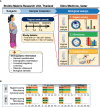
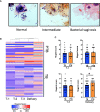
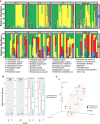

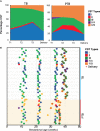
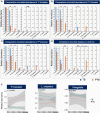

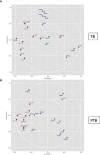
Similar articles
-
The Vaginal Microbial Signatures of Preterm Birth Delivery in Indian Women.Front Cell Infect Microbiol. 2021 May 13;11:622474. doi: 10.3389/fcimb.2021.622474. eCollection 2021. Front Cell Infect Microbiol. 2021. PMID: 34094994 Free PMC article.
-
Shotgun sequencing of the vaginal microbiome reveals both a species and functional potential signature of preterm birth.NPJ Biofilms Microbiomes. 2020 Nov 12;6(1):50. doi: 10.1038/s41522-020-00162-8. NPJ Biofilms Microbiomes. 2020. PMID: 33184260 Free PMC article.
-
Microbiome-producing SCFAs are associated with preterm birth via trophoblast function modulation.mBio. 2024 Dec 11;15(12):e0270224. doi: 10.1128/mbio.02702-24. Epub 2024 Nov 11. mBio. 2024. PMID: 39526775 Free PMC article.
-
Lactobacillus crispatus dominant vaginal microbita in pregnancy.Ceska Gynekol. 2020 Winter;85(1):67-70. Ceska Gynekol. 2020. PMID: 32414287 Review. English.
-
Relationship of Lactobacillus Vaginal Microbiota Changes and the Risk of Preterm Birth: A Systematic Review and Meta-Analysis.J Womens Health (Larchmt). 2024 Feb;33(2):228-238. doi: 10.1089/jwh.2023.0393. Epub 2023 Dec 8. J Womens Health (Larchmt). 2024. PMID: 38064523
Cited by
-
Roles of the Microbiota of the Female Reproductive Tract in Gynecological and Reproductive Health.Microbiol Mol Biol Rev. 2022 Dec 21;86(4):e0018121. doi: 10.1128/mmbr.00181-21. Epub 2022 Oct 12. Microbiol Mol Biol Rev. 2022. PMID: 36222685 Free PMC article. Review.
-
Characteristics of cervicovaginal microflora at different cervical maturity during late pregnancy: A nested case-control study.PLoS One. 2024 Mar 20;19(3):e0300510. doi: 10.1371/journal.pone.0300510. eCollection 2024. PLoS One. 2024. PMID: 38507418 Free PMC article.
-
Preterm birth, a consequence of immune deviation mediated hyperinflammation.Heliyon. 2024 Mar 24;10(7):e28483. doi: 10.1016/j.heliyon.2024.e28483. eCollection 2024 Apr 15. Heliyon. 2024. PMID: 38689990 Free PMC article. Review.
-
Inflammatory Bowel Disease Treatments and Predictive Biomarkers of Therapeutic Response.Int J Mol Sci. 2022 Jun 23;23(13):6966. doi: 10.3390/ijms23136966. Int J Mol Sci. 2022. PMID: 35805965 Free PMC article. Review.
-
Effect of vaginal microbiota on pregnancy outcomes of women from Northern China who conceived after IVF.Front Endocrinol (Lausanne). 2023 Jul 18;14:1200002. doi: 10.3389/fendo.2023.1200002. eCollection 2023. Front Endocrinol (Lausanne). 2023. PMID: 37547323 Free PMC article.
References
-
- Andrews S. (2010). FastQC: a quality control tool for high throughput sequence data. Available at: http://www.bioinformatics.babraham.ac.uk/projects/fastqc.
-
- Blencowe H., Cousens S., Oestergaard M. Z., Chou D., Moller A. B., Narwal R., et al. . (2012). National, regional, and worldwide estimates of preterm birth rates in the year 2010 with time trends since 1990 for selected countries: a systematic analysis and implications. Lancet 379, 2162–2172. 10.1016/S0140-6736(12)60820-4 - DOI - PubMed
Publication types
MeSH terms
Substances
Supplementary concepts
Grants and funding
LinkOut - more resources
Full Text Sources
Other Literature Sources

